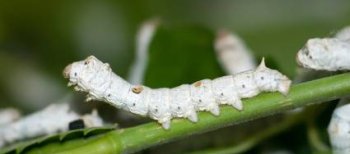
Saturday, October 31, 2020
Wednesday, October 28, 2020
About American Hero Quilts
American Hero Quilts were established in 2004 to provide a recognition and an appreciation to the wounded service men and women who served in the Iraq and Afghanistan. 15 years later approximately 29,200 quilts have been given to deserving men and women and their families. The quilts are sent to Madigan Hospital at Joint Base Lewis McCord, other Warrior Transition Centers in the US, and directly to bases in Afghanistan and Qatar.
To see some of the great quilts already donated click here
For more information or to participate please check out American Hero Quilts.
Tuesday, October 27, 2020
Thinking About the Batting's Qualities
Things to think about when selecting the right batting.
Drapability: The density or sparseness of the quilting and the loft of the batting will affect the drape, or relative stiffness or softness, of the finished quilt.
Grain line: Many batts have a grainline. Just like with fabric, the lengthwise grain is stable and doesn’t have much give; the crosswise grain will be stretchy.
Note: A wall hanging is happiest when the stable grainline is vertical.
Loft: This term describes the thickness of the batting. Different loft levels result in different appearances in a finished quilt.
Resiliency: This is the batting’s ability to regain its original shape--how quickly it can spring back when unfolded and how it resists creasing.
Warmth: Cotton battings absorb moisture, making them cool in the summer and warm in the winter. Wool battings provide warmth with little weight.
Note: I live in Seattle. After many years of sleeping with a polyester comforter, I decided it was time I make a quilt with a cotton batt. We nearly froze the first winter. We now have quilt with a wool batt, it’s perfect.
Washability and shrinkage: Polyester and wool battings resist shrinking, while cotton can shrink from 3 to 5 percent. Some quilters prefer the puckered, antique look that results when batting shrinks. I prefer no shrinkage so I prewash my batting.
Note: Read the manufacturer’s directions if you choose to prewash.
Here is a comparison of types of batting and the pros and cons of each.
Hand quilting
Will your stitching be high density? Choose a low-loft batting. Batting options could include 100% cotton, cotton/polyester blend, or wool.
Will your stitching be medium density? Choose a medium-loft batting. Batting options could include a cotton/polyester blend or wool.
Will your stitching be low density? Choose a high-loft batting. This combination is not recommended as stitching will be lost in the batting’s loft.
Machine quilting
Will your stitching be high density? Choose a low-loft batting. Batting options could include cotton, cotton/polyester blend, or wool.
Will your stitching be low density? Choose a medium-loft batting. Batting options could include wool or a cotton/polyester blend.
Tied quilts
Choose a medium- to high-loft batting. Only batting option should be polyester.
Note: Looong before I knew better, I put a cotton batt in a tied quilt. The first time it was washed there was one large lump of batting in the corner.
How Will Your Quilt Be Used?
Before you make your final batting choice, consider how you’ll use your quilt. These questions will help you evaluate which batting is best for your project.
Is it a baby quilt that will be washed and dried extensively? Will it be placed on a child’s bed and get pulled and tugged? Are you making a wall hanging that needs to maintain sharp, crisp corners? Or are you making a quilt that you want to drape loosely over a bed and tuck beneath the pillows? Is it an heirloom project that will be used sparingly and only laundered once every few years? Or is it a decorative item that will never be washed? Is it a table runner that needs to lie extremely flat?
Bed Sizes
Crib mattress 23 x 46” Batting 45 x 60”
Twin Size mattress 39 X 75” Batting 72 x 90”
Double/full mattress 54 x 75” Batting 81 x 76”
Queen Size mattress 60 X 80” Batting 90 x 108”
King Size mattress 76 X 80” Batting 120 x 120”
Saturday, October 24, 2020
Choose the Quilt Batting
How to Choose Quilt Batting
To find the right batting for your quilting project, you’ll need to consider a variety of things, including:
Quilt Use: What will the quilt be used for? Will this be a wall quilt, a baby quilt, bed quilt, child’s quilt or a garment?
Polyester is often chosen for crib and bed quilts, while silk is a popular choice for garments.
How the Quilt Will Be Washed
Laundering is another concern, as some types of batting break down more easily in the washing machine.
Will you be washing the quilt often? When you do wash the quilt, will you be washing it by hand or in the washing machine? Do you want the batting to shrink in the wash?
• Bamboo will shrink in the wash.
• If you plan to use wool batting, you will need to wash by hand.
• Bonded batting holds up best when washed.
Loft and Fibers
Loft refers to the height of the batting. Low-loft quilts are flatter, while high-loft quilts are “puffier.” The loft you choose will depend on how you want the quilt to look. When using high-loft batting, the quilting lines will be more apparent. When using low-loft batting, you will get a flatter finish.
Quilting Method
Will you be quilting by hand or by a machine? High-loft batting is often not a good choice for hand quilting, but may be a perfectly suitable choice for machine quilting. Cotton batting is also ideal for machine quilting.
Finding the right batting for your project can be a challenge at first, but once you find one that you like, you can continue using that type with similar projects in the future.
Thursday, October 22, 2020
Common Batting Materials
Cotton
Cotton is soft, light, breathable and natural – which makes it a popular choice among quilters. Batting that’s made from 100% cotton is typically very thin.
Polyester Polyester is favored because it holds its shape and thickness very well. Polyester has its benefits and drawbacks. It’s non-breathable and thicker, but it’s lighter, keeps you warm and is resistant to mold and mildew. Quilters often choose this type of batting for bedding and crib quilt s that will be often washed.
Wool
Lightweight and warm, wool is a lofty and natural option for quilters. Like polyester, wool holds its shape very well and is resistance to creases.
Cotton/Poly Cotton/polyester blends offer the best of both worlds. In most cases, the batting is an 80% cotton, 20% polyester blend. Because cotton makes up the majority of the material, you get the advantages of breathability and a mostly natural fiber. The polyester adds a little more loft.
Bamboo In most cases, bamboo batting is made with a blend of 50% bamboo and 50% cotton. This provides a very breathable material, but will shrink slightly when washed.
 Silk batting is a natural fiber made from the silkworm
cocoon. It is one of the newer batting to come on the market. Batting made from
silk is very light, fluffy and drapes like no other batting making it great for clothing.
Silk batting is a natural fiber made from the silkworm
cocoon. It is one of the newer batting to come on the market. Batting made from
silk is very light, fluffy and drapes like no other batting making it great for clothing.
There are also different ways to “bond” fibers together when creating batting.
Bonded Using the bonded method, the fibers are bonded together using either a resin or thermal method. With this method, the fibers won’t break down as easily when washed.
Resin bonded batting is made using a variety of fibers, including wool, cotton and polyester. For this method, a resin is applied to each side of the batting. The batting is then left to dry and cure.
Fusible Contains a fusible web, which allows for basting of layers.
Needle Punch The needle punch method uses thousands of tiny needles to felt the batting together mechanically. Needle punch batting has a lower loft, but is stronger and denser than most other batting.
Scrim Scrim refers to yet another method of fusing batting fibers together. With this method, a thin stabilizer is needle-punched into the quilt’s batting. This adds loft and strength while preventing distortion and stretching.
Tuesday, October 20, 2020
The Middle Layer: The Batt
I'd like to talk about 'the batt' in the next few posts. This comes to mind because I’ve been making quilts for charity.
I used to say when asked “what kind of batt do I use?” I had three requirements; 80 percent or more cotton, in my house and the right size. But I’ve learned a few things. A 80 percent cotton 20 percent poly batt with a scrim (a thin stabilizer in the batt) was my go to for years: a great choice for many quilts, but not for one to probably be washed and dried many times.Let me explain, I feel that the hardest thing we can do to fabric is put it in the dryer. My husband could never figure out why his cotton shirts never wore out. The answer is simple; I always hung them to dry! The same principle applies to our quilts. However I realize it’s not reasonable to expect all quilts to be ‘dried flat’.
So a major consideration needs to be considered ‘the batt’. Simply put, quilt batting is a layer of insulation between the top and bottom layer of your quilt’s patchwork. There are numerous types of batting available and a wide range of thicknesses, which can make it difficult to know which one to choose for your project. Batting can be created using a variety of materials. Typically, the fibers are held together using one of many techniques, which helps keep the batting together.













